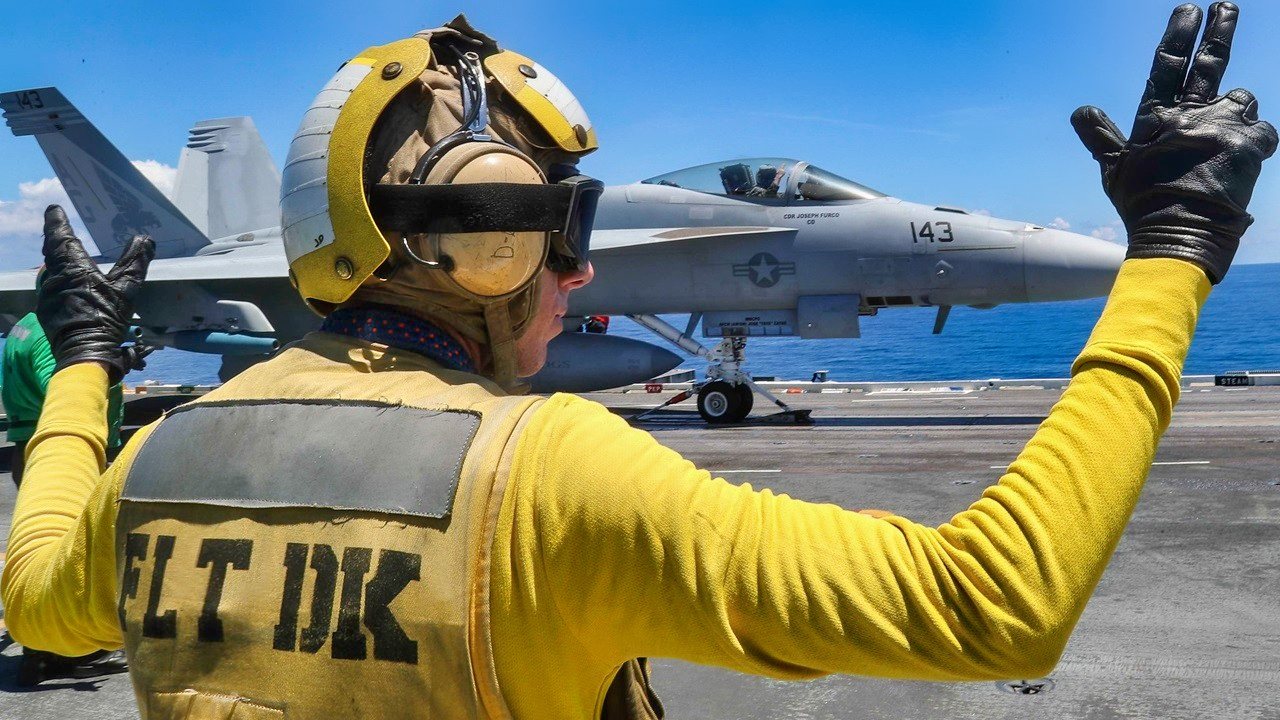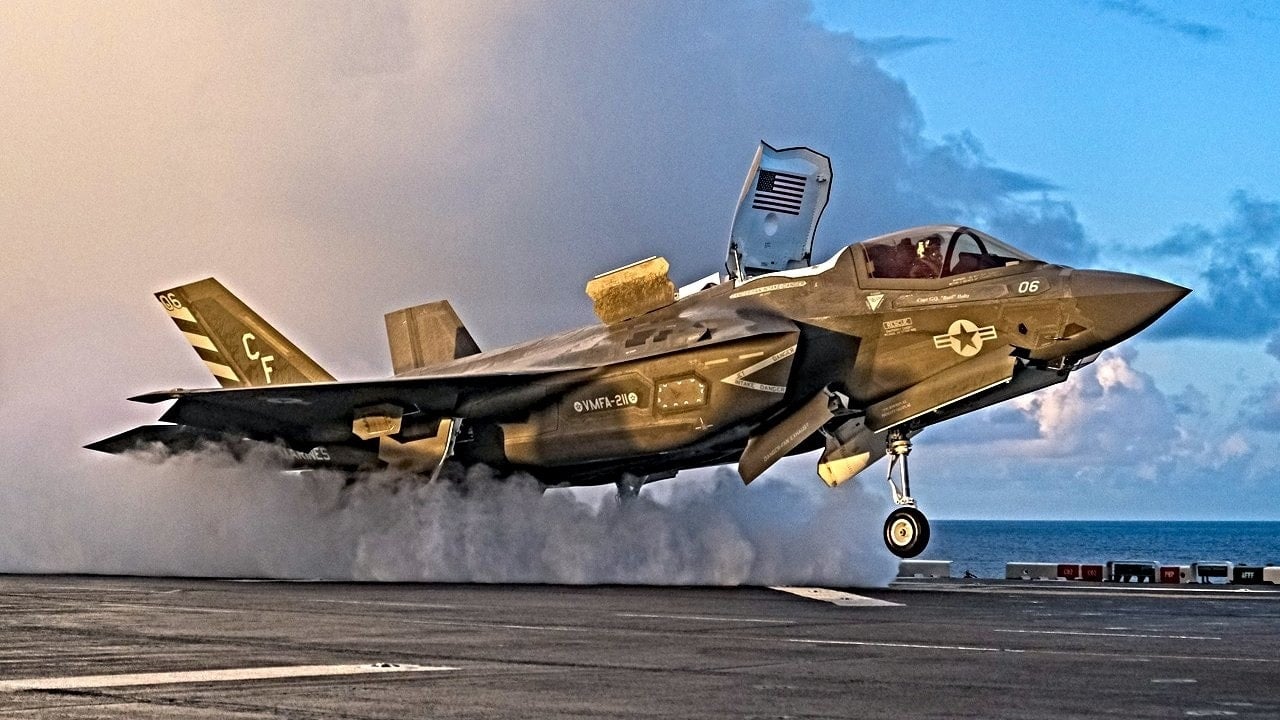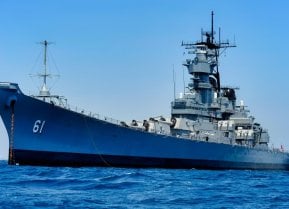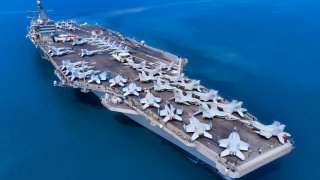Nothing Can Replace the Aircraft Carrier
There is nothing that can compare to the flexibility and capabilities of an aircraft carrier. It is not just for launching strike aircraft, there are all those other things it can do, ranging from humanitarian to disaster relief
On Monday, the United States Secretary of the Navy Carlos Del Toro thanked the crew of Carrier Strike Group 12 while aboard the USS Gerald R. Ford (CVN-68), the United States Navy's newest and largest aircraft carrier. The warship had just completed its first full deployment and peacekeeping mission overseas – a deployment that was extended multiple times due to the ongoing war in Gaza.
"They have protected our national security interests in the Mediterranean, the Baltic, the Atlantic and they have performed superbly on every level," Del Toro told reporters. "So many people across the United States and our shipyards and in our Navy should be filled with pride as this ship pulls back into Norfolk, Virginia."
The nuclear-powered supercarrier, the lead vessel of its class, will return to Naval Station Norfolk along with the remainder of the strike group later this week. The carrier will then begin a maintenance period – and it could be several months or longer before the warship sees its next deployment.
That's good news for the crew and their families, but it is just one of several issues that put into question the future of these massive floating airbases. One problem is that the United States lacks the facilities to properly build and maintain these large ships.
Aircraft Carrier: A Big Target?
Of course, the biggest concern is that a supercarrier could be a really big target in a war with a near-peer adversary. The old fear was from enemy aircraft and submarines, but the threat now includes hypersonic missiles, undersea unmanned vehicles (UUVs), and unmanned aerial vehicles (UAVs). Low-tech threats still remain a concern as well, as was seen on October 12, 2000, when suicide terrorists exploded a small boat alongside the Arleigh Burke-class guided-missile destroyer USS Cole (DDG-67), while she was being refueled in Yemen's Aden harbor.
More recently, other U.S. Navy warships have come under repeated fire in the Gulf of Aden and the Red Sea from missiles fired by Yemen's Houthi rebels. The sinking of the Russian Navy's flagship Moskva in the Black Sea by land-based anti-ship missiles is another reminder that floating targets can be hit all too easily.
As previously reported, it wouldn't really take all that much to do considerable damage to such a high-value target. In addition, the systems are now so complex that they could even be targeted in a cyber attack. The question is whether the United States Navy needs such a massive floating airbase that faces so many threats.
It is also true that the modern aircraft carrier is more vulnerable than ships were even just a few decades ago because of a leap forward in shore-to-ship missiles such as the Chinese DF-21D, which has been dubbed by some as a "carrier killer." With a range of 900 miles, it could present a serious problem to a carrier, but throughout its history, the carrier's defense has always been the aircraft and ships that sail with her.

However, it is important to remember that aircraft carriers do not sail out into harm's way alone – hence the carrier strike group (CSG), which consists of a ring of vessels both on the surface and below. Just as drones could be employed to target a warship, they'll likely serve to protect it as well.
There is a point to be made that in the case of the Moskva, the Russian Navy – much like the Russian Army – expected the Ukrainians to be quickly defeated. The warship operated close to the shores of a hostile enemy with little regard for the potential threat. It is unlikely the U.S. Navy would put a carrier in harm's way as the Black Sea Fleet did with its flagship.
Nothing Can Do What an Aircraft Carrier Does
As this reporter also previously laid out, a major concern with the U.S. Navy's carriers is the fact that because they are nuclear-powered they are slow to build, difficult to maintain, and even expensive to retire.
Yes, such a vessel has nearly unlimited range, yet the endurance is only as great as the food and water it can carry. A ship that can stay a sea indefinitely is good until one considers that it still needs to be supplied with fuel for the aircraft and food for the crew.
This brings up the calls for medium carriers – which could be on the size of the Royal Navy's Queen Elizabeth-class or essentially comparable to the U.S. Navy's amphibious assault ships, which can operate with the Lockheed Martin F-35B Lightning II, the short/vertical takeoff and landing variant of the fifth-generation multirole fighter. Such vessels can also deploy United States Marines on distant shores.

In other words, the United States Navy will continue to operate flattops for years to come.
"The carrier hasn't sailed into the sunset," Brad Curran, aerospace and defense industry principal analyst at Frost & Sullivan, told this reporter in a piece for FoxNews in 2015. "There is nothing that can compare to the flexibility and offer the capabilities of a carrier. It is not just for launching strike aircraft, there are all those other things it can do ranging from humanitarian to disaster relief."
Author Experience and Expertise: Peter Suciu
Peter Suciu is a Michigan-based writer. He has contributed to more than four dozen magazines, newspapers, and websites with over 3,200 published pieces over a twenty-year career in journalism. He regularly writes about military hardware, firearms history, cybersecurity, politics, and international affairs. Peter is also a Contributing Writer for Forbes and Clearance Jobs. You can follow him on Twitter: @PeterSuciu. You can email the author: [email protected].


